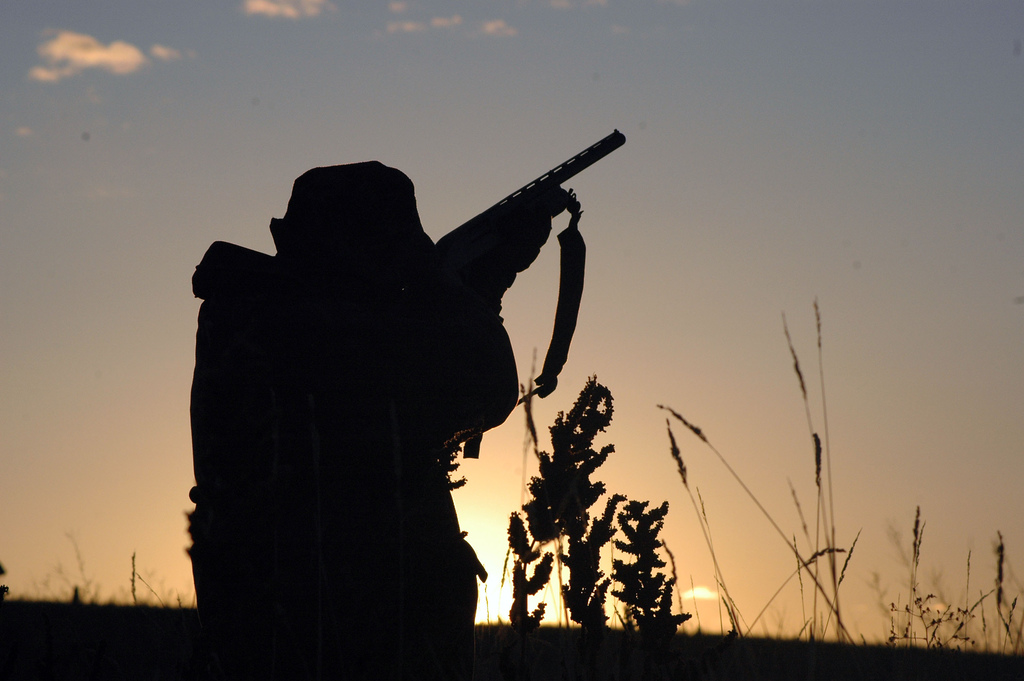Hunters, trappers and anglers drive conservation in North America

By Professor Mark Boyce, Professor, Department of Biological Sciences, University of Alberta
Hunters and anglers are the primary stimulus for conservation in North America. We support conservation more than any other interest group, and most conservation programs in North America would not exist without the efforts and investments of hunters and anglers. In addition, the economics of hunting, trapping, angling, and other nature-based forms of recreation are substantial.
In the United States, the economic consequences of hunting and fishing amounted to $159 billion in 2007. Just by way of comparison, that’s two and a half times the total oil exports from Canada in one year. The Canadian tourism council believes that Canada could capture a much greater amount of revenue from hunting and fishing because we have such spectacular hunting and fishing opportunities.
Before moving to Alberta in 1999, I spent most of my life in the United States, so I have some experience with the U.S. system. There are three elements of the United States fishing, hunting, and trapping system that I’d like to highlight.
The first is the cooperative fish and wildlife research unit system that’s distributed across the states. There are 40 of these units and they’re jointly funded by the federal government, the state government, and universities. They help to meet the research needs of the state, and they train the next generation of fish and wildlife researchers. I was a co-op unit student at the University of Alaska where I did my master’s work.
Second, major funding for wildlife education, monitoring, and research is supported by the Pittman-Robertson fund that directs revenues from an 11% excise tax on hunting equipment, firearms, and ammunition, managed by the Department of the Interior, with allocations to the states on a 25%:75% match, 75% coming from federal revenues.
Third, the Dingell-Johnson Act provides the same sort of support for fisheries education, monitoring, and research based on an excise tax on fishing tackle. The Pittman-Robertson and Dingell-Johnson programs have been extremely important in ensuring a steady flow of funds for wildlife and fisheries, something that is urgently needed in Canada.
We can actually do it better than the U.S.A. by expanding the base to include camping equipment, binoculars, and other outdoor equipment, and then provide broader support, including for non-game species.
Hunters and anglers are proud of the fact that we are the primary source of funding for conservation in North America. Living in the United States, I never heard anyone complain about the Pittman-Robertson excise tax, partly because most people don’t know they’re being taxed. The tax is imposed on the price of the item before you purchase it, unlike the GST, which is added on afterwards.
Continuing funding for monitoring and research is crucial to being able to ensure sound management of wildlife resources. Provincial support for fisheries and wildlife is sometimes volatile. As an example, last week 150 staff from Alberta Environment and Sustainable Resource Development were cut as a consequence of reduced energy revenues because of the low price of oil.
In addition to my supervision of fish and wildlife research, I’m an avid hunter and angler, and my wife and I maintain a registered trapline in the Rocky Mountains. Canada leads the world in the development, testing, and legal requirements of humane trapping standards. Trapping produces a continuing source of revenues from crown land and if well managed can generate fur value of approximately 25-50% of that obtained by forestry on the same land base. Trapping provides revenue every single year and when the rotation—like in the Rocky Mountains and many places—is 100 years, those 100 years of accumulated fur returns off of the same land base can be a substantial amortized total.
In addition trappers provide an important service by controlling problem wildlife. I’ve done a fair amount of work on beaver control. Flooding damage to infrastructure and crops costs industry, municipalities, and agriculture across Canada hundreds of millions of dollars each year, sometimes approaching $1 billion.
A final comment is that hunters and trappers are passionate about our traditional way of life that inspires us.
About Professor Mark Boyce
I am a Canadian citizen and a fellow of the Royal Society of Canada. I’m very active in the Wildlife Society, which is the professional organization to which most wildlife biologists belong.
My position at the University of Alberta was endowed by the Alberta Conservation Association, with revenues from the sale of hunting and fishing licences in Alberta. The Alberta Conservation Association was founded in 1997 to ensure that revenues from the sale of hunting and fishing licences were allocated to conservation rather than going into provincial coffers.
My job is to supervise graduate student research in wildlife, and I have one of the largest wildlife research programs in Canada. My particular focus is on large mammals, fur-bearers, and game birds. My research program has been funded by a long list of organizations, including NSERC and Delta Waterfowl. The amount of funding my research program has attracted since I moved to Alberta in 1999 is approximately $30 million. I’ve had relatively little funding directly from the Alberta provincial government, but I work very closely with the provincial government in identifying wildlife management needs for Alberta.
[Photo Credit: Jeff/Flickr]



